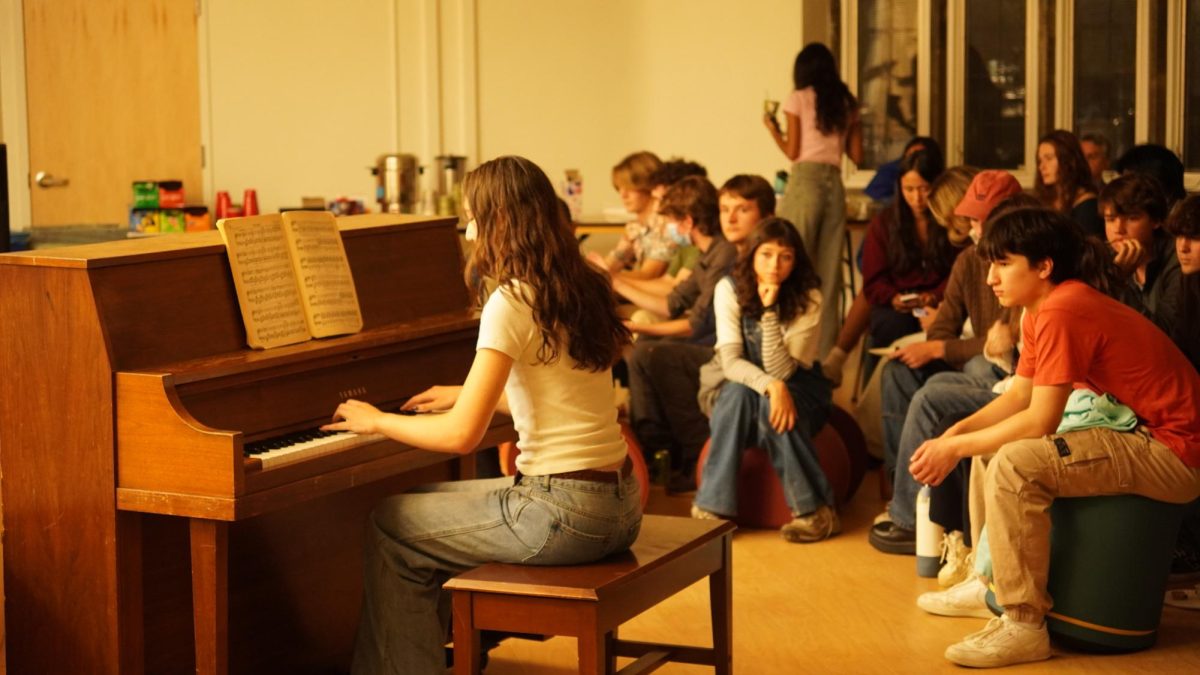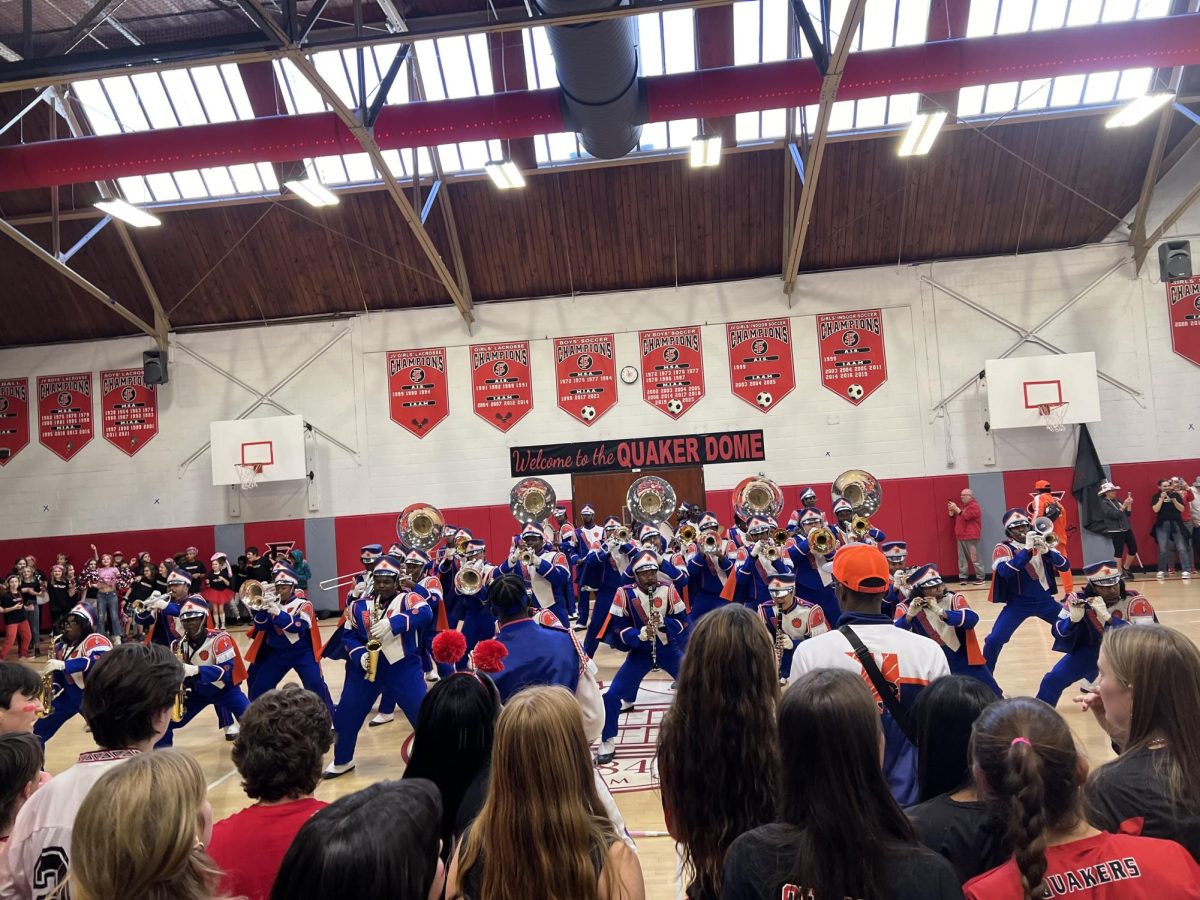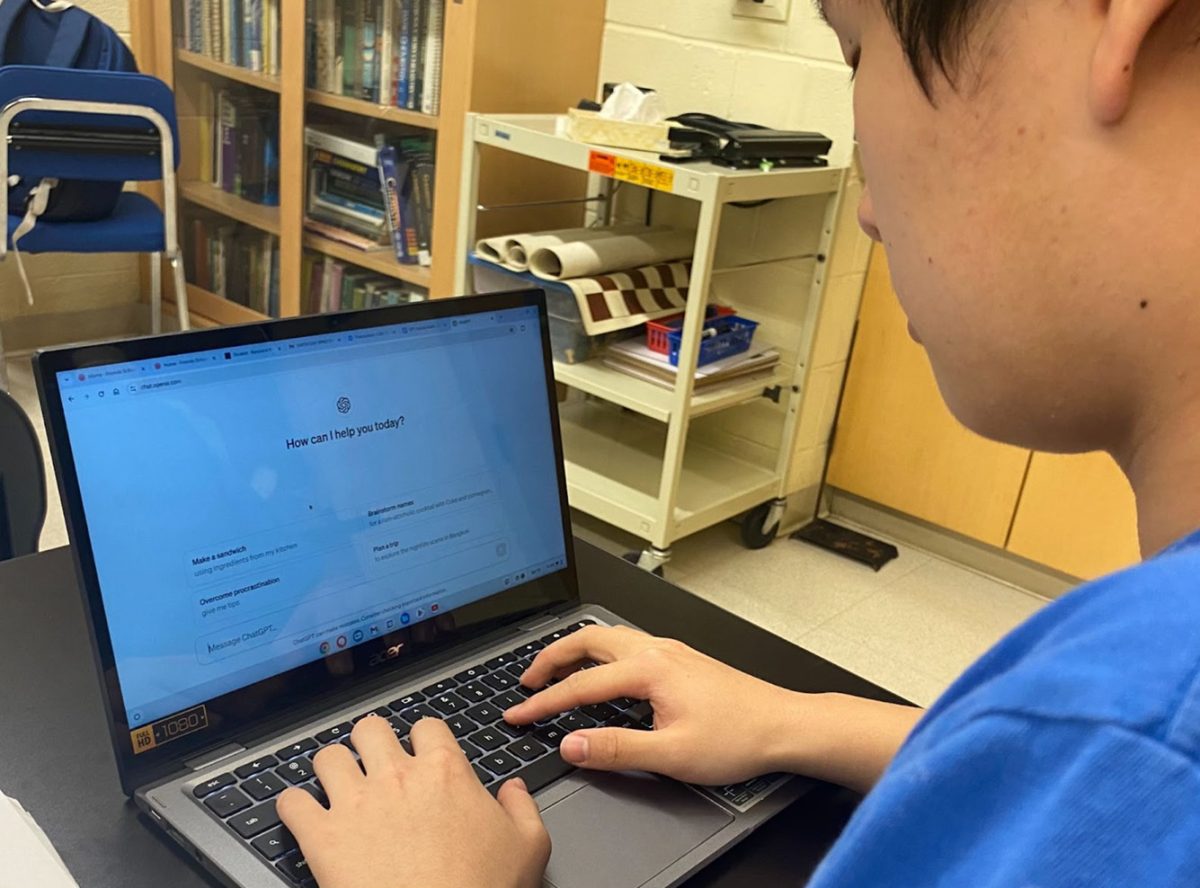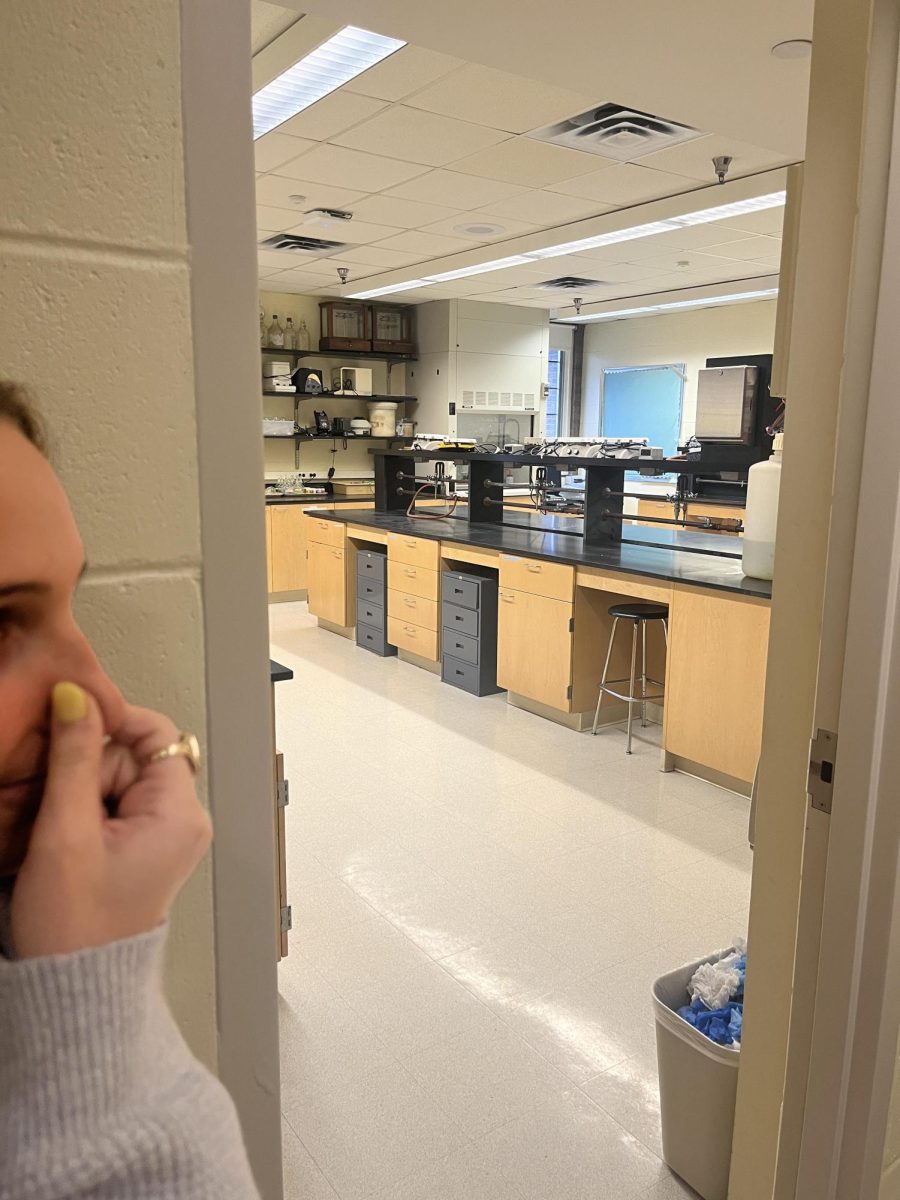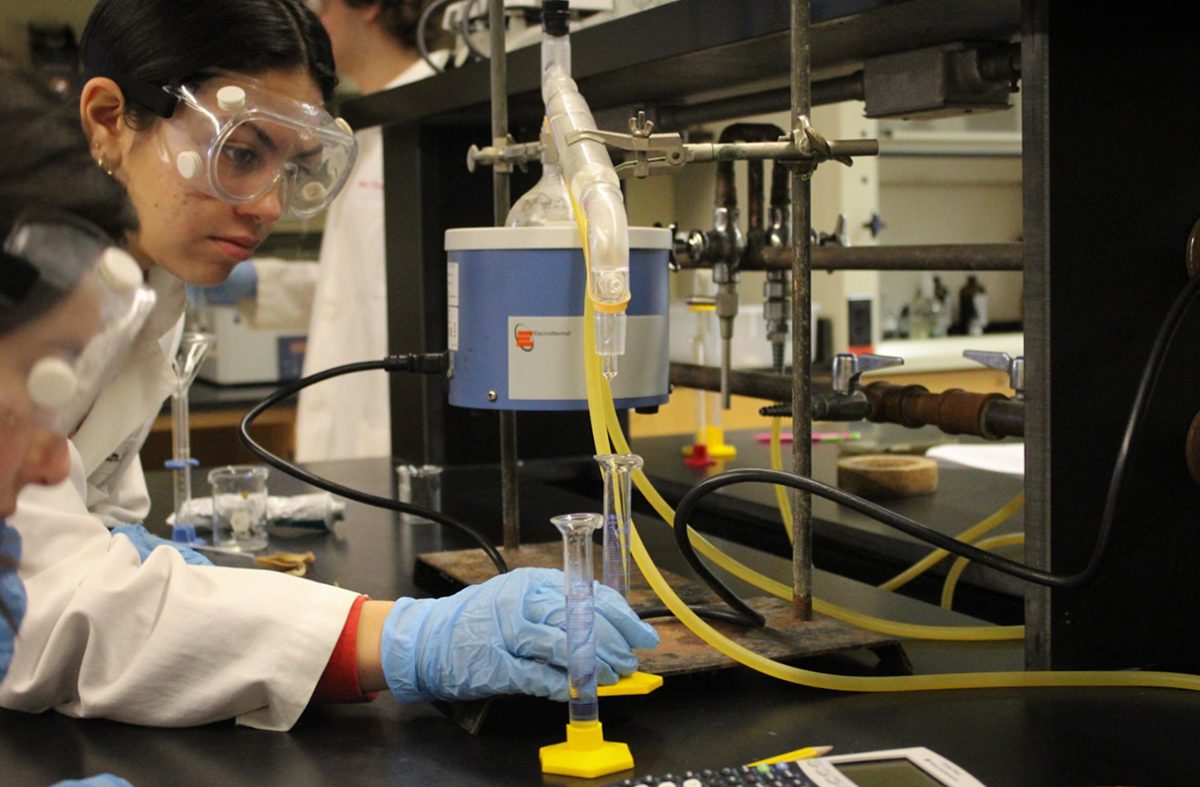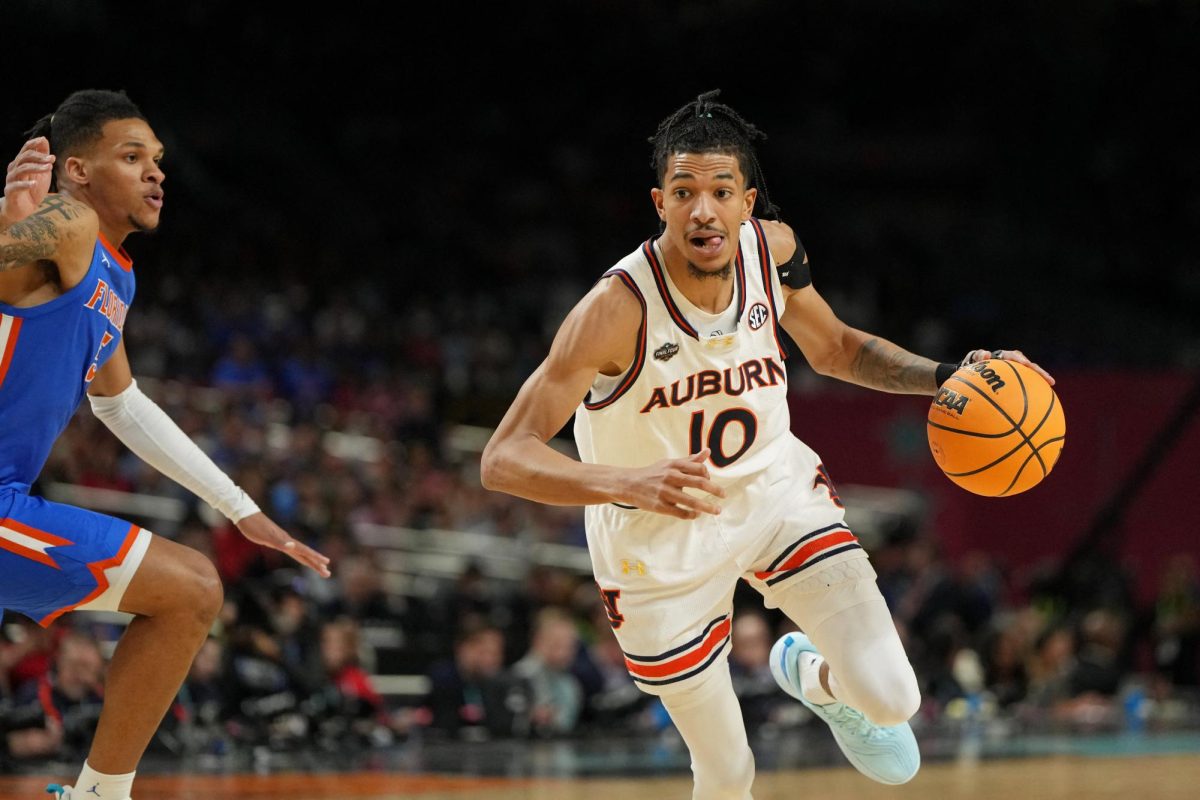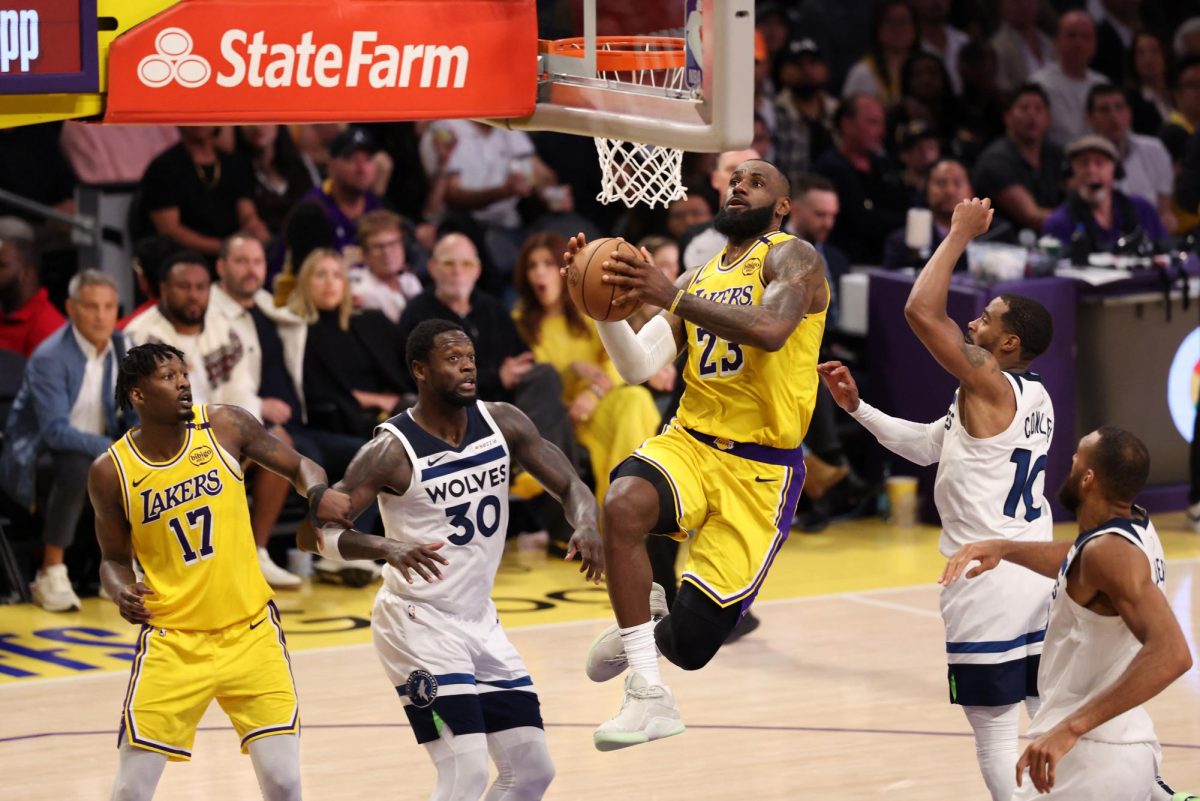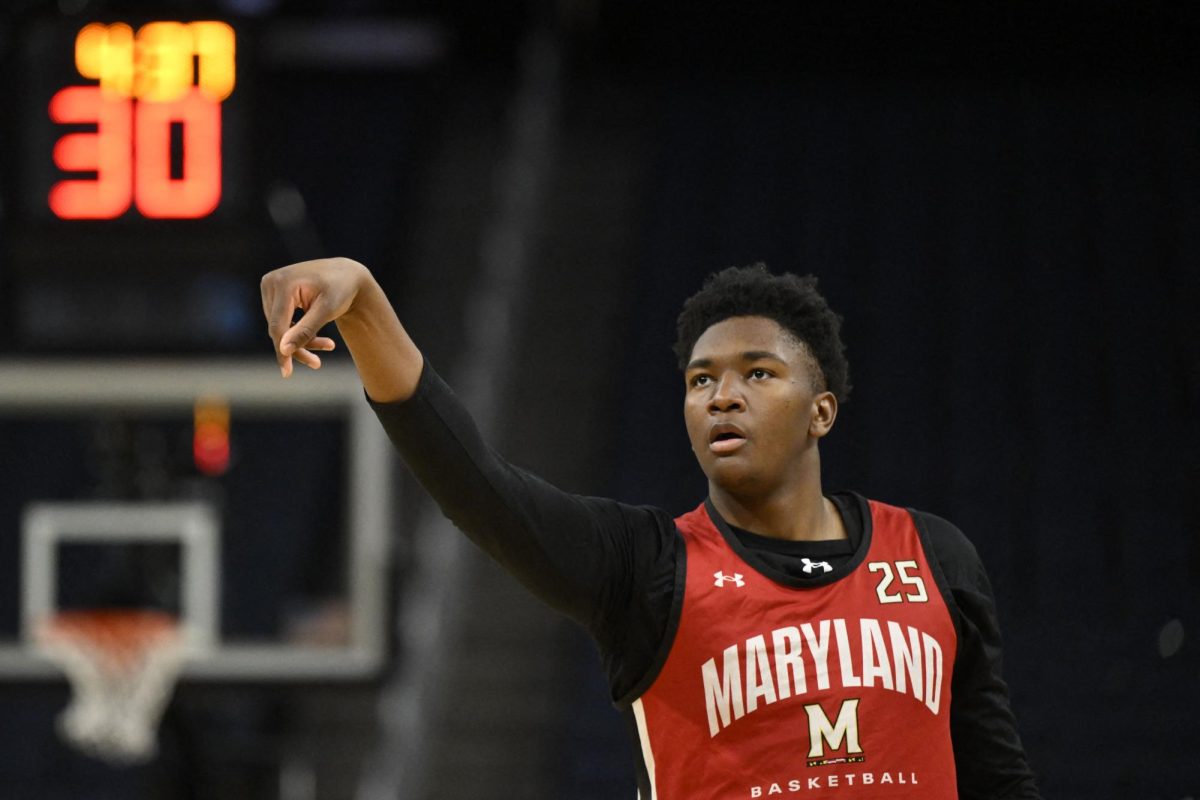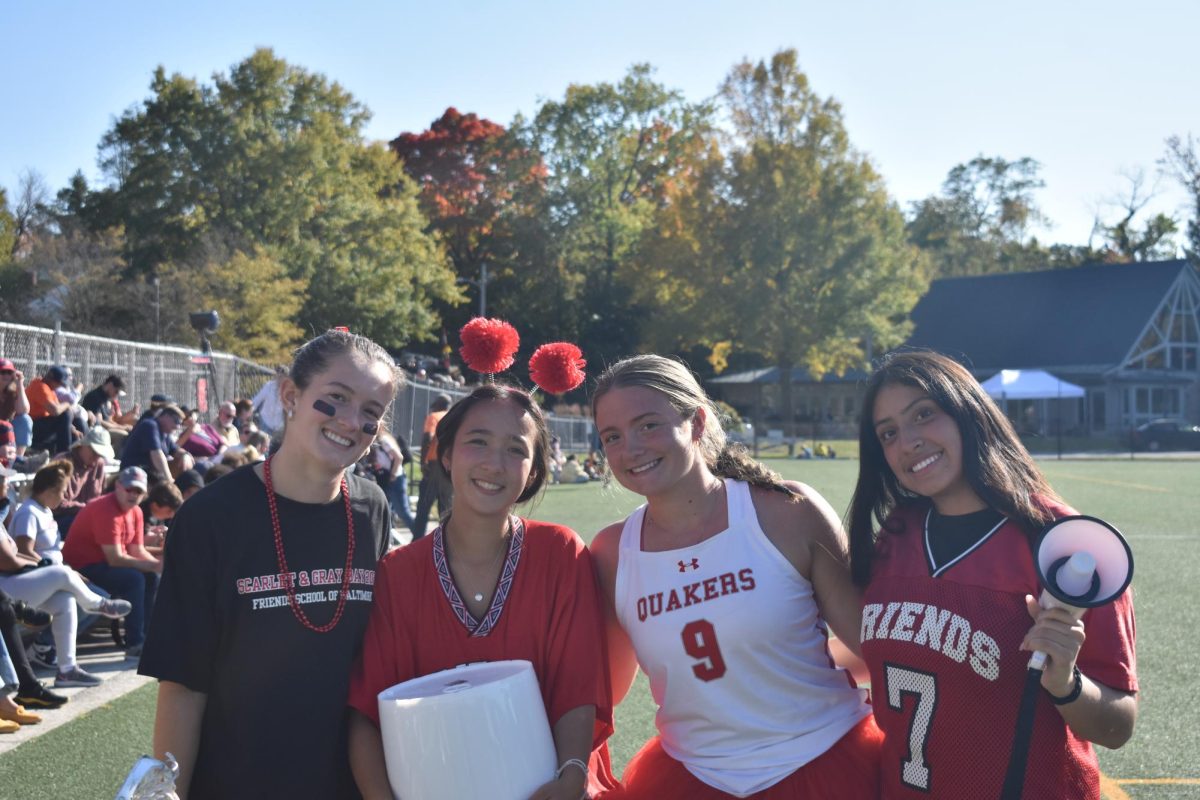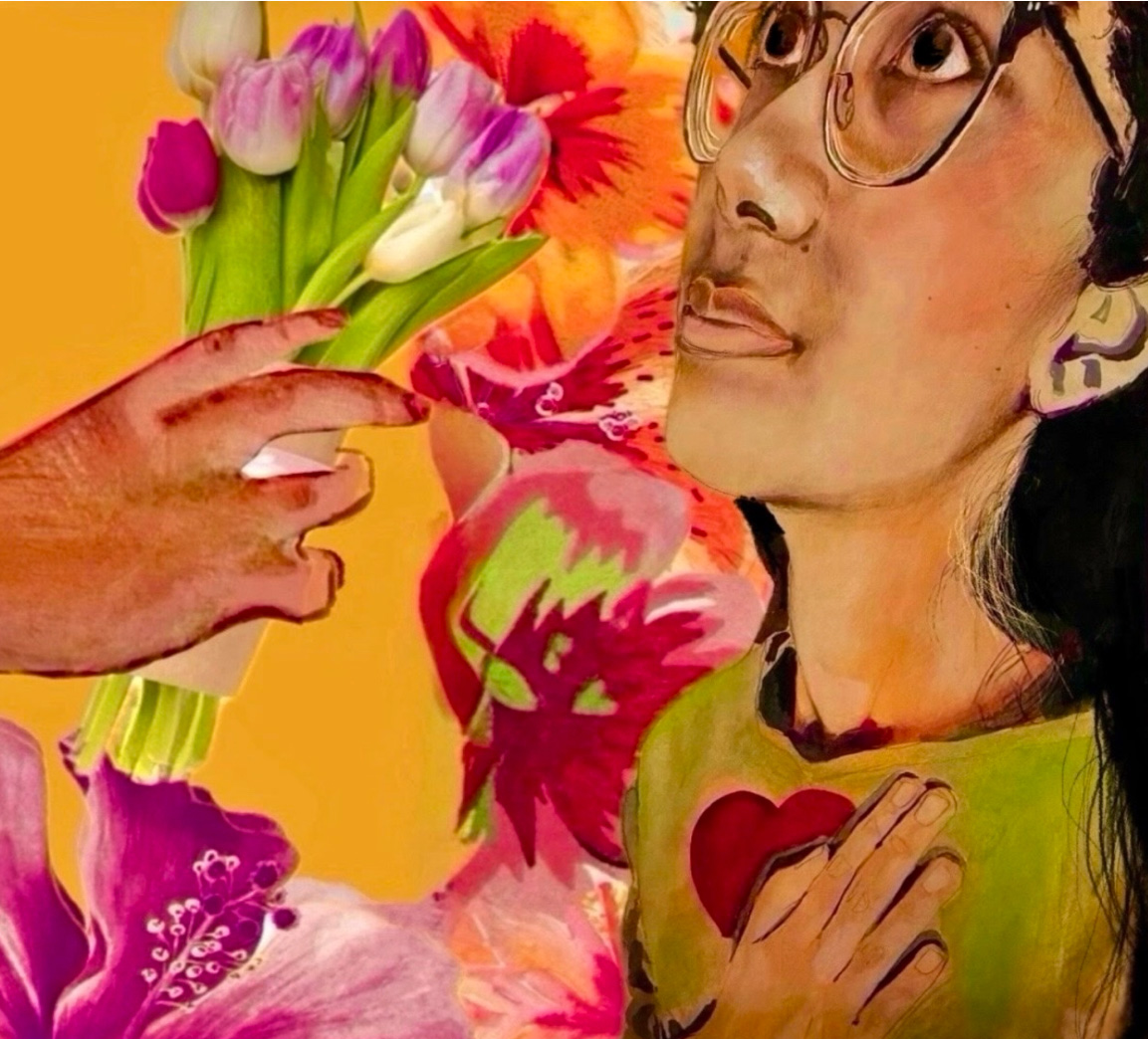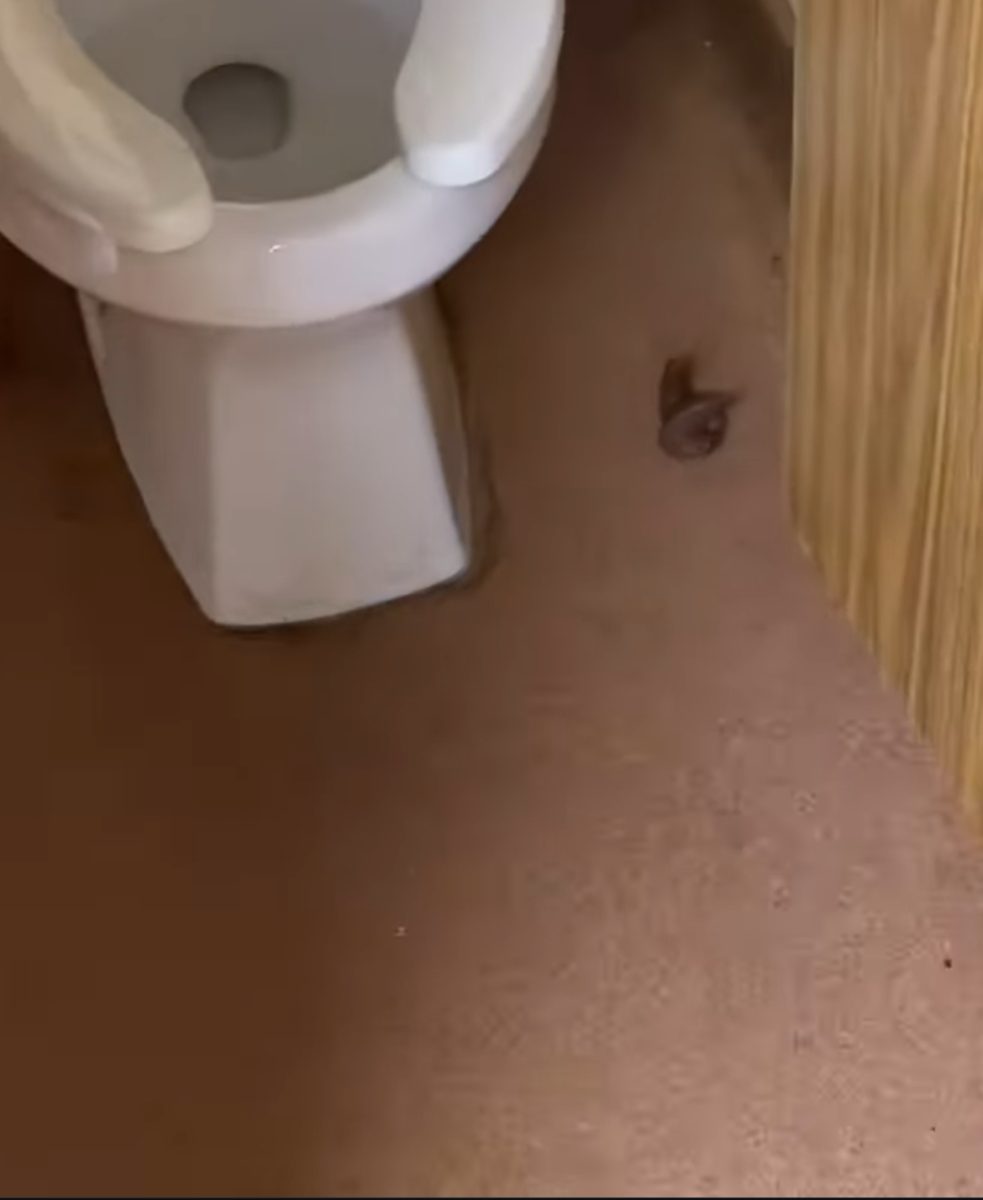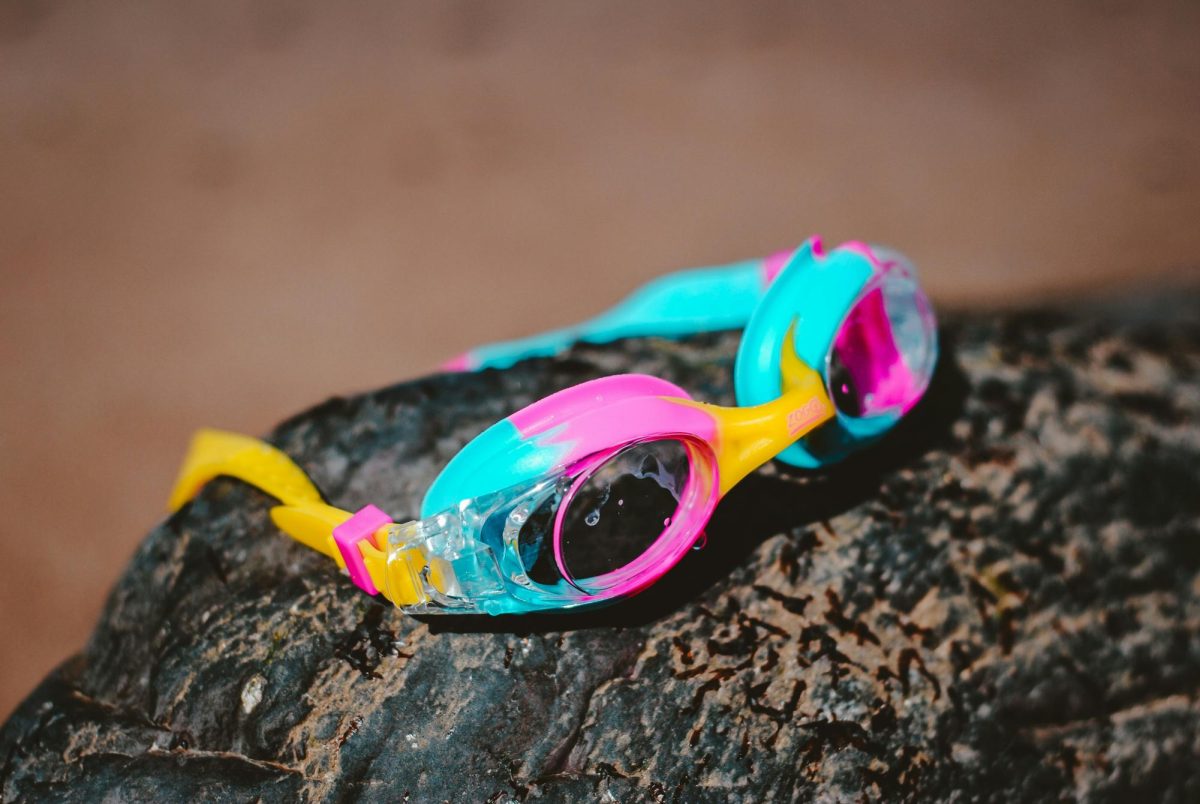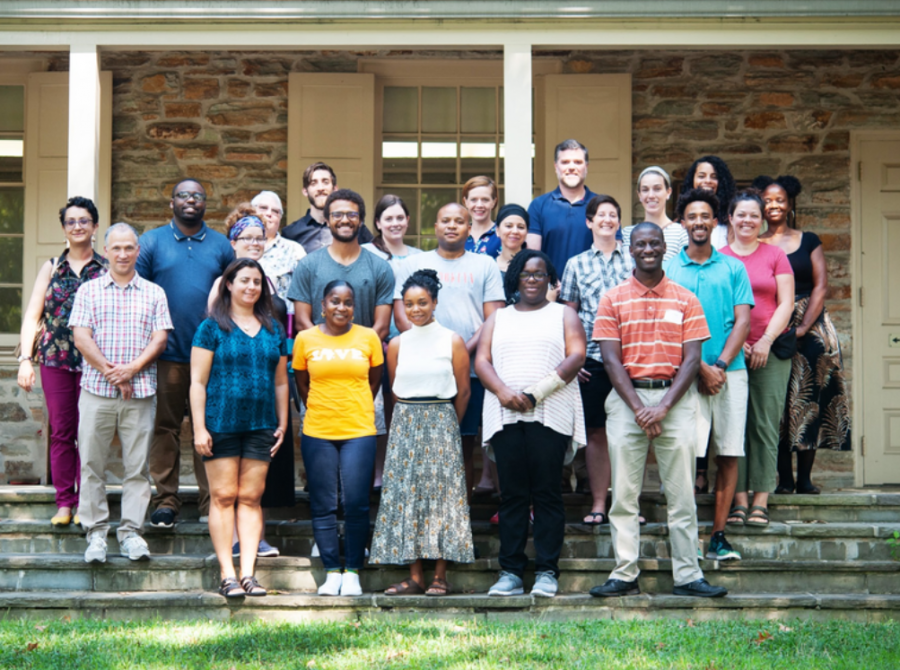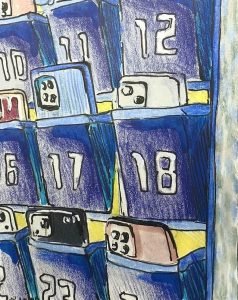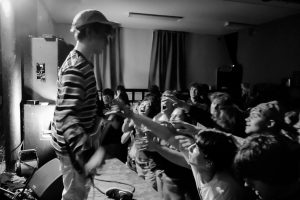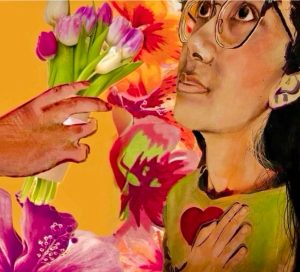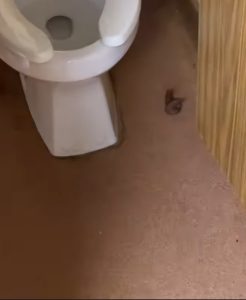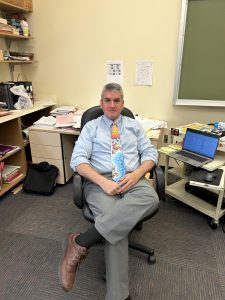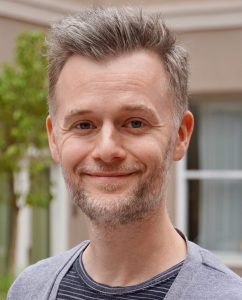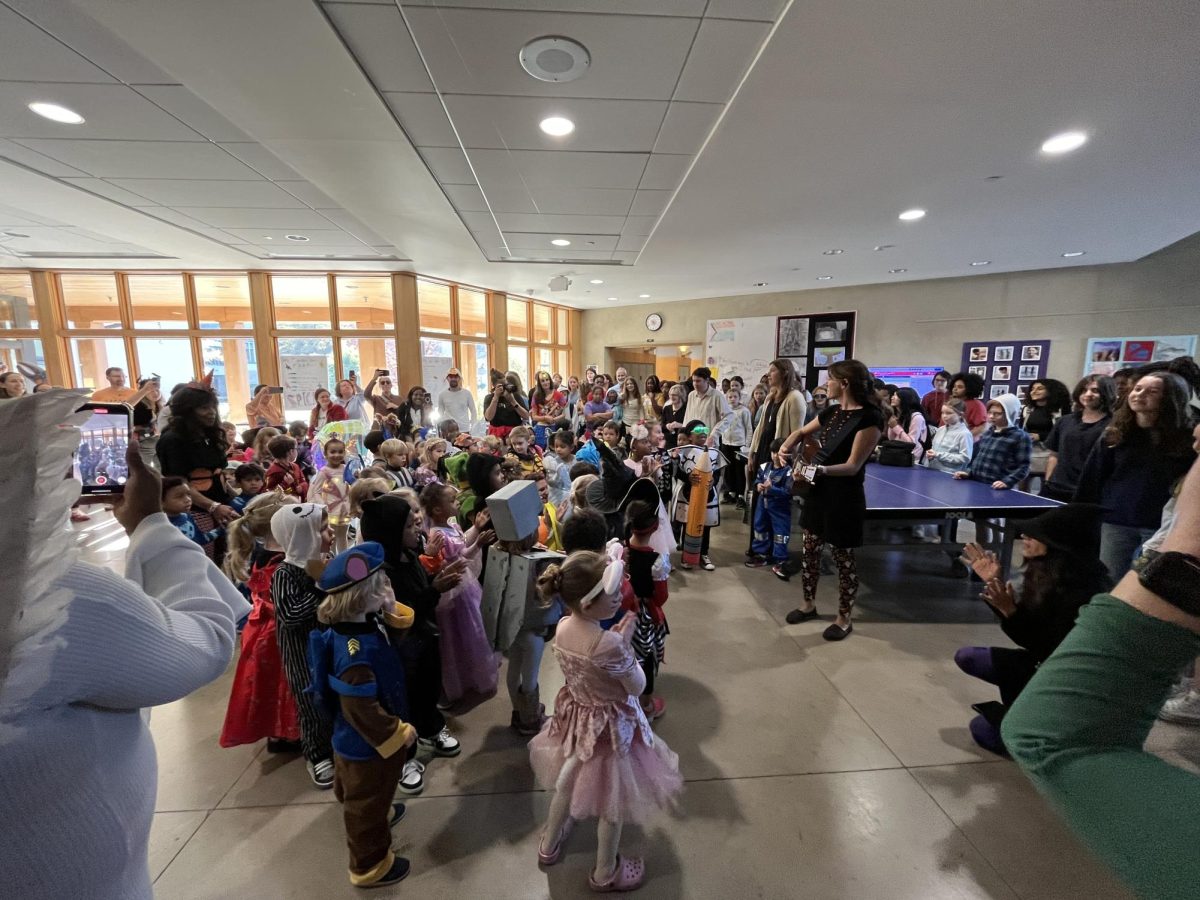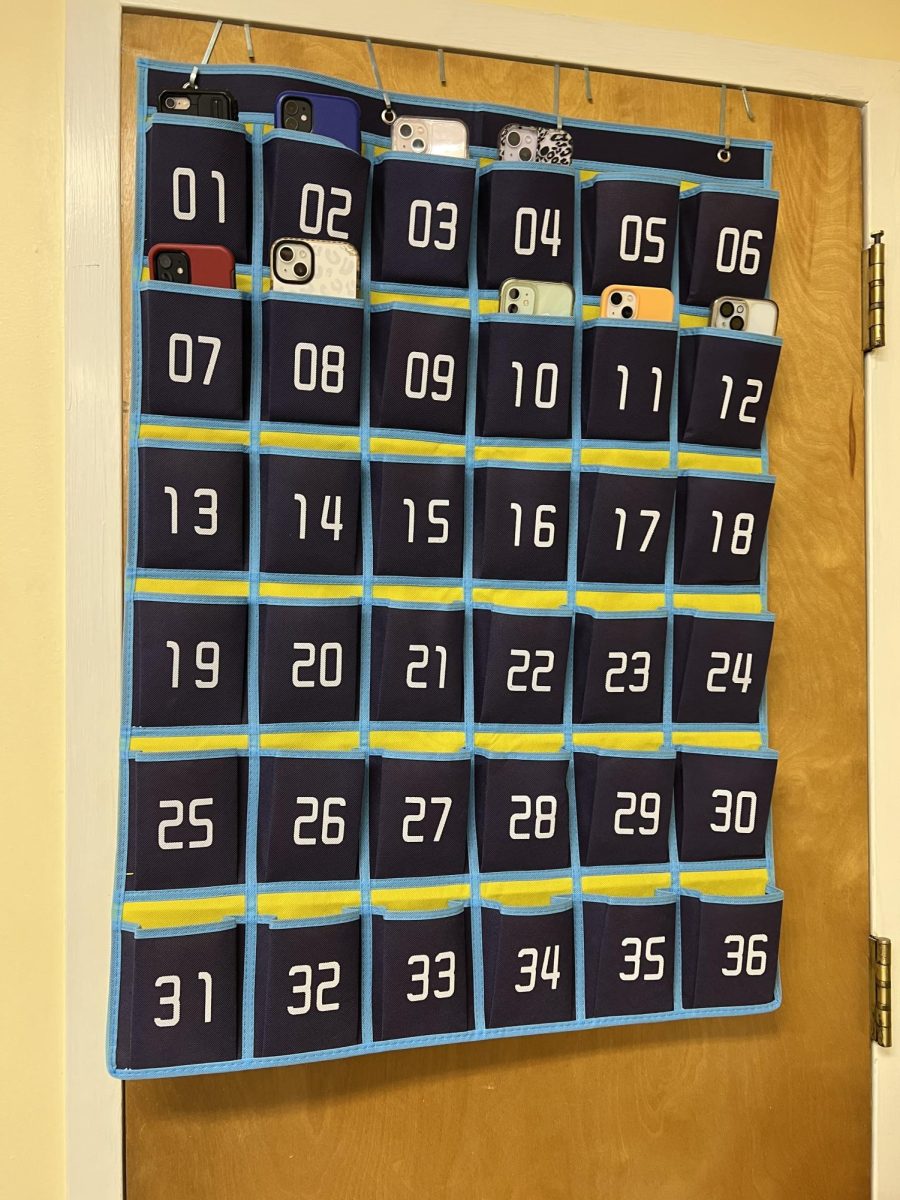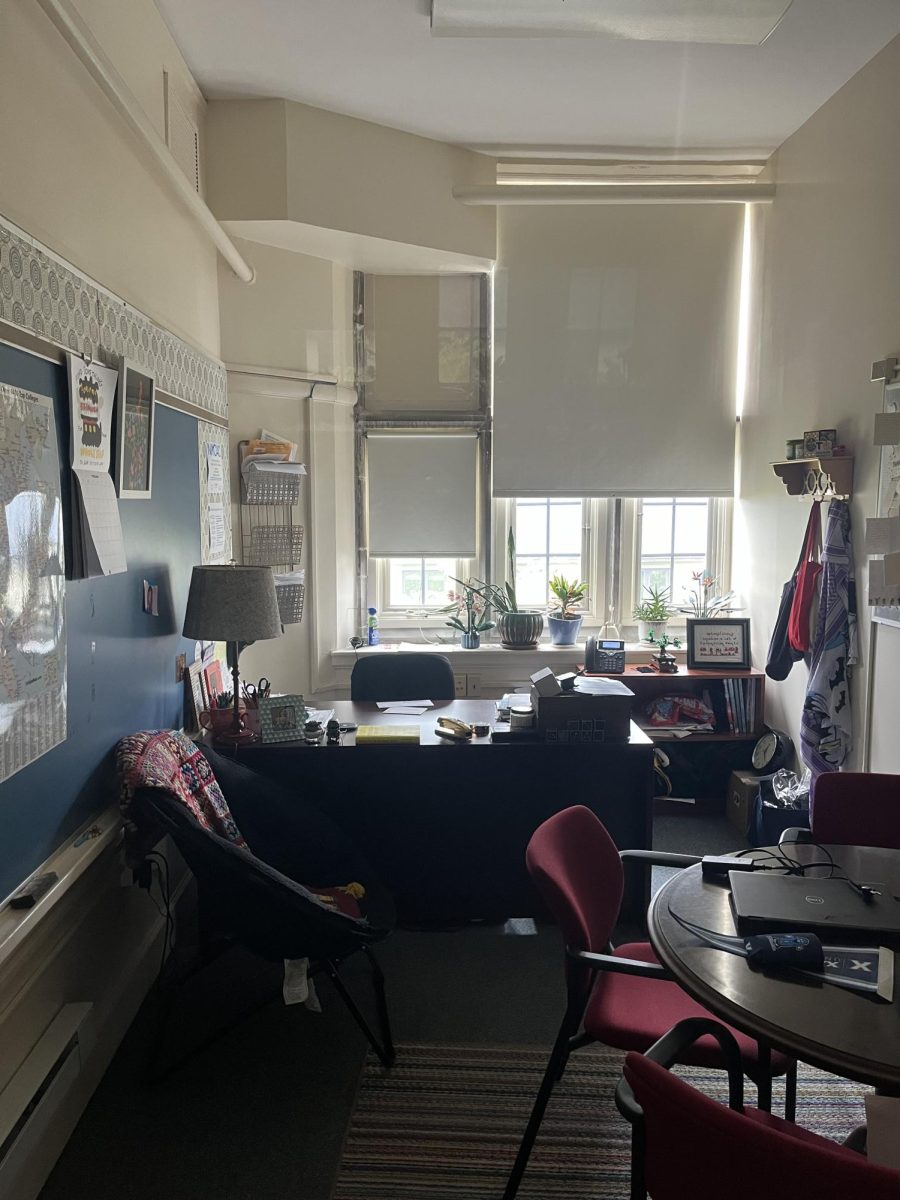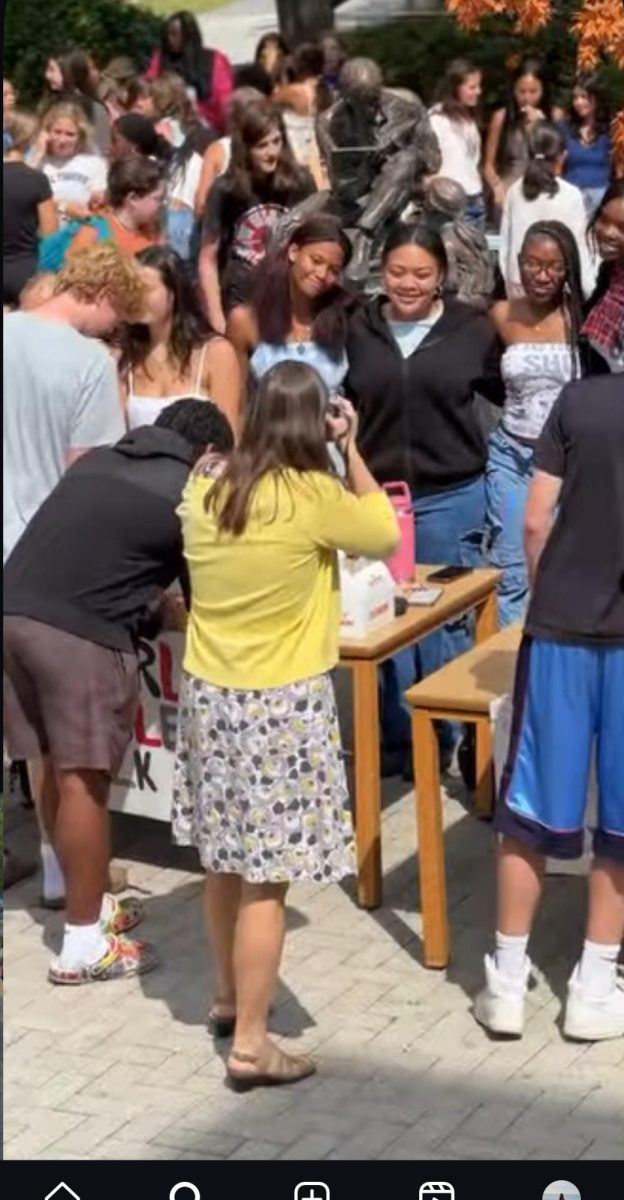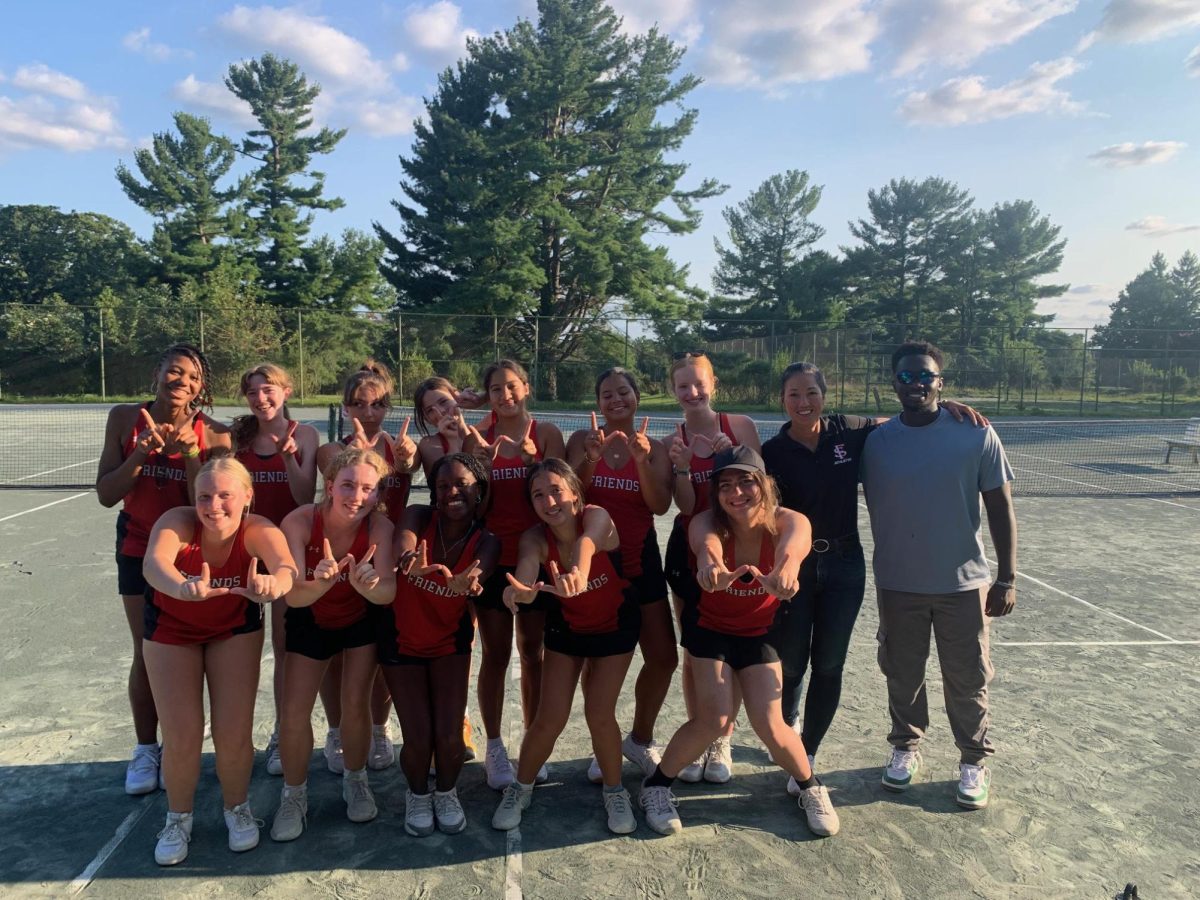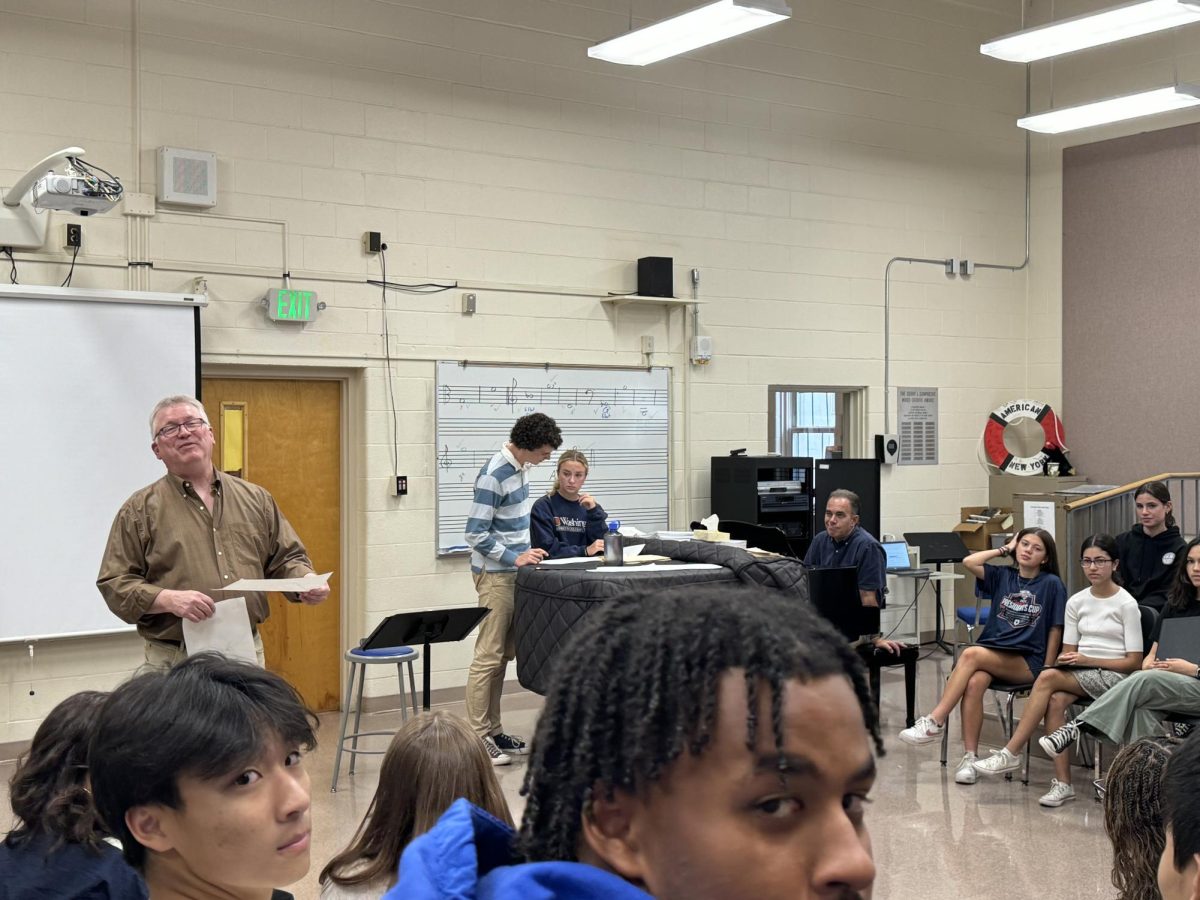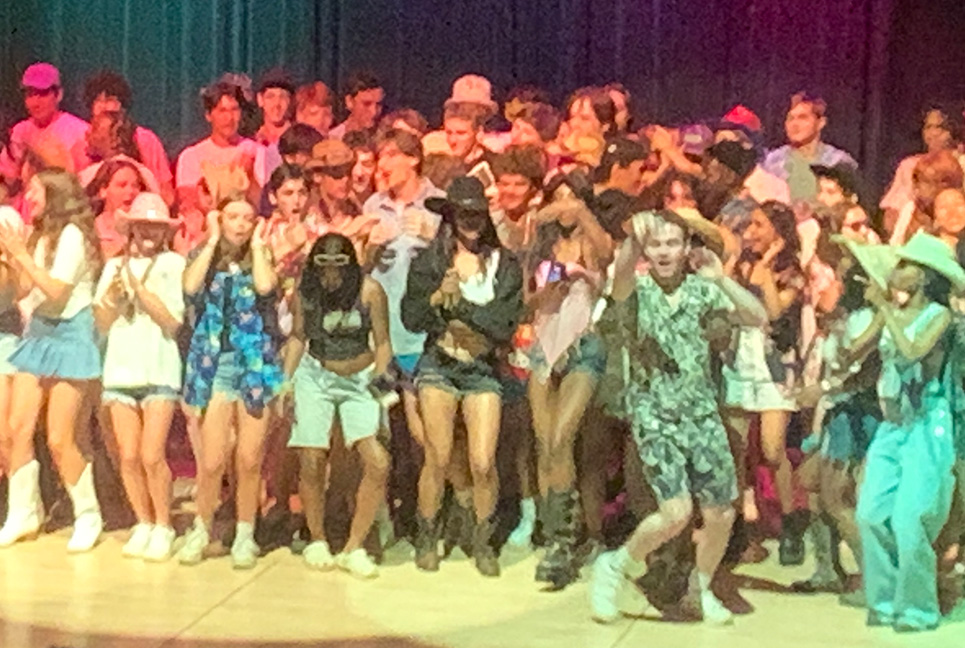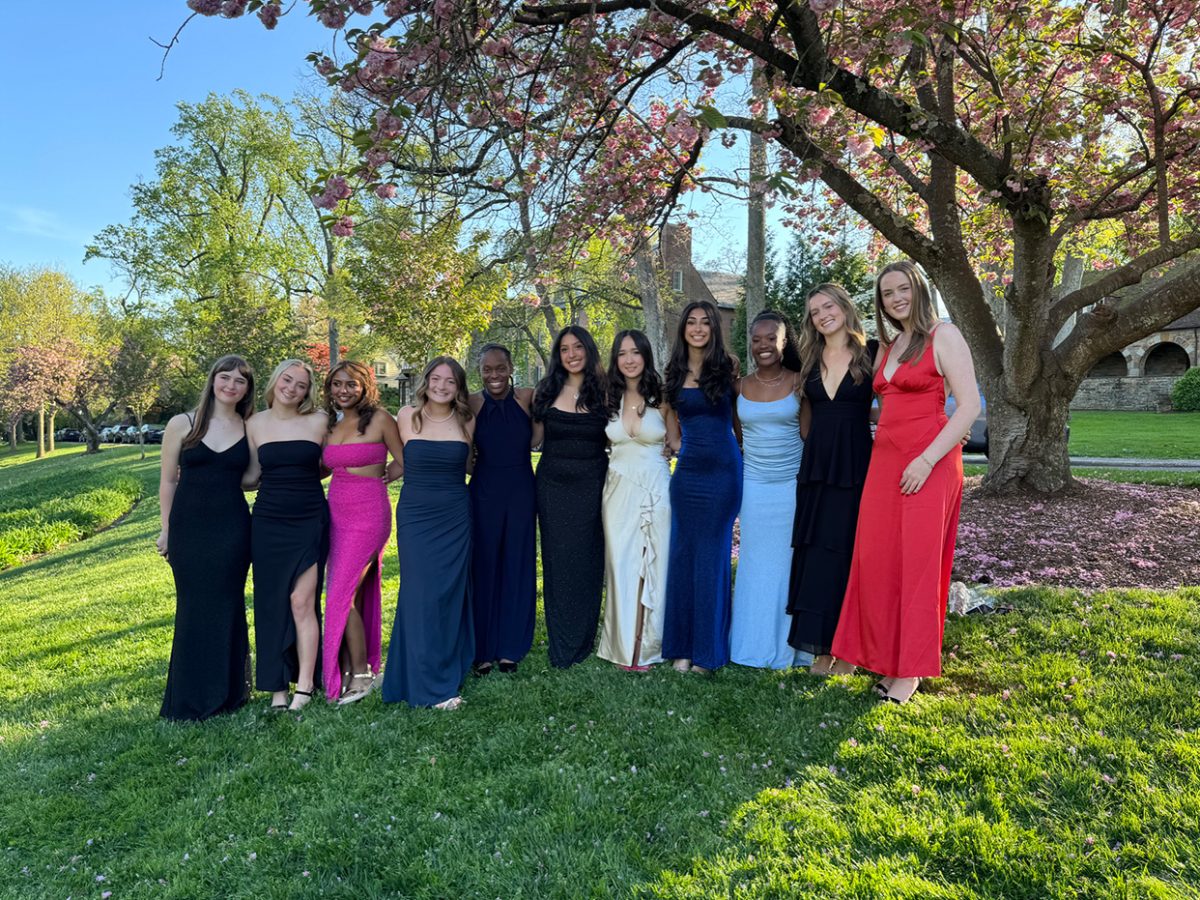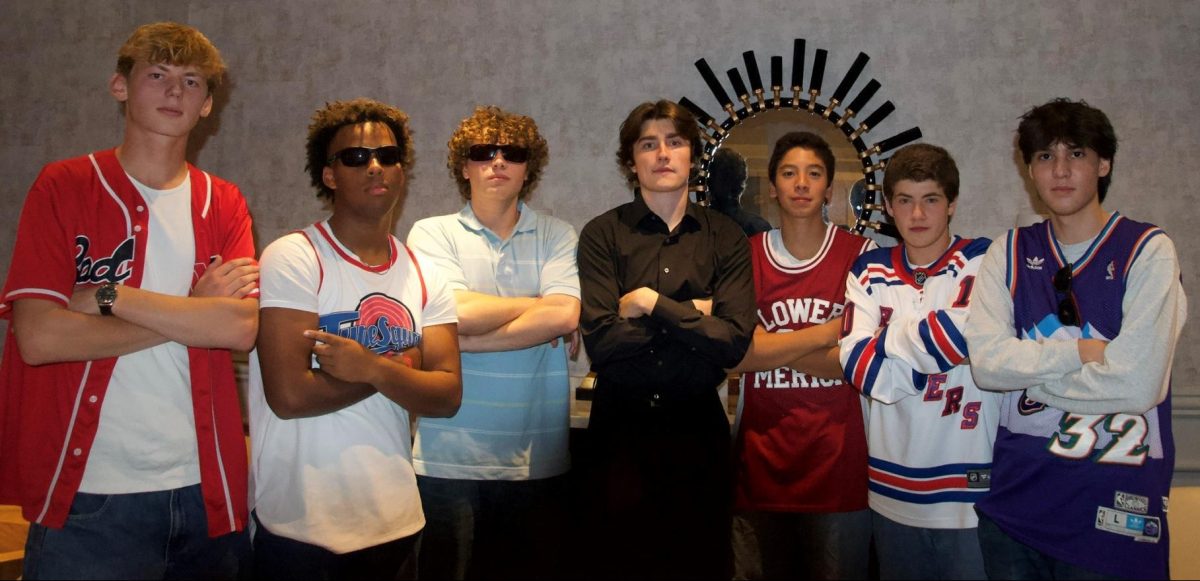Friends Welcomes Most Diverse Group of New Teachers Ever
The largest group of new hires in 30 years is also the most diverse by race, gender identity, and sexual orientation
Friends School photographer Laura Black
Friends’ newest teachers and staff gather on the Meetinghouse steps during their new faculty orientation in August 2019
November 14, 2019
In 2019, Friends has seen the largest increase in new teachers in more than 30 years. Over 30 teachers and staff members joined the school this fall. In Collection the first week of school, Steve McManus, the head of the Upper School, announced that this group of teachers are the most diverse group of new hires in Friends School history. Across gender, racial, ethnic, and sexual orientation lines, the makeup of Friends faculty and staff is starting to change with the times.
“The most important consideration when we’re looking at teaching candidates is their ability to help our students succeed. This factor involves many qualities, such as their experience, their passion for the subject matter and the joy they derive from working with young people,” Head of School Matt Micciche wrote in response to a Quill query.
“We also know that studies have repeatedly shown there are significant educational benefits for all students in being taught by a diverse range of teachers,” wrote Mr. Micciche. “I’m most excited about our new teachers throughout the school this year because I believe that due to all the positive qualities they bring to their work – including, in some cases, their racial, ethnic, and other kinds of diversity – they are highly likely to enhance our students’ experiences.”
Last year, around 20 percent of Friends faculty and staff were people of color, and only about 2 percent were openly LGBTQ. Of the new hires in summer and fall 2019, 20 identify as people of color, and four openly identify as LGBTQ, shifting the numbers to 27 percent and 4 percent respectively.
For comparison, 32 percent of Friends students are kids of color, and the Middle and Upper School GSAs boast mailing lists of dozens of students.
Jordan Wright is a new math teacher in the Upper School and a 2010 Friends alumnus.
“One of the reasons why I teach is to make sure that there is someone like myself at the front of the classroom,” he says.
A decade ago, when Wright was a student here, the Friends faculty was much whiter.
“There were few instructors of color, particularly male, at the front of the classroom when I was a student,” he says. “I think that motivated me to go into teaching myself, so I at least could make sure that some students do have that individual at the front of the room for them.”
Mr. Wright is one of three new teachers who are also alumni. All three are men of color. David Fakunle (class of 2005), is teaching an L-block elective in African Drumming. And Nabil Odulate, who graduated in 2012, is back at Friends teaching 5th grade.
“I think it’s really important that students of color can see themselves in all kinds of positions at a school like Friends,” Mr. Odulate says. “While a hundred percent there’s dignity in all labor, if you’re attending a school and you don’t see people that look like you in leadership positions – [if] you only see people that look like you as members of the staff, but not necessarily members of the faculty – whether you like it or not, that’s saying something to you as a student.”
That’s not something Odulate consciously thought about when he was a student here, but he sees its importance now as a teacher.
Many longtime teachers say they are excited about the new faces on campus.
“I love the new diversity at Friends,” says Blanca Peña-Welch, who has taught Spanish here for seven years. “I don’t feel alone anymore. And I feel empowered and safer that there are more people like me.”
Another new face in the Upper School is librarian Damion Scott. Mr. Scott previously worked at Lakeland Elementary in South Baltimore, where most of his students, like him, were people of color. About the new diversity at Friends, he says: “It is important and speaks to where the school wants to go in the future. Also, the school is politically aware of this, and what we can do as a community to make a change.”
Another new teacher is Jabari Lyles, who is teaching a new class in LGBTQ Studies. He also has a full-time job in the Mayor’s office, and he says it is very diverse. Mr. Lyles identifies as black and gay.
“I am happy to represent multiple marginalized communities, and I hope that that is inspiring for the younger kids that are a part of the LGBTQ community. I am very proud to be working at Friends.”
Another new addition to Friends is the new registrar in the Upper School, Sangha Majumdar. She came to Friends this summer from a private school in Japan, where “we had people come from all over: Germany, China, and even the US.”
“Friends School is quite diverse, to me,” she says. “But I think, at this point, diversity should be the norm at Friends School. We should not have to announce the new level of diversity to the student body [in Collection], because it should already be in our brains that we as a community are diverse.”
Reporter Quinn Parker contributed to this story.

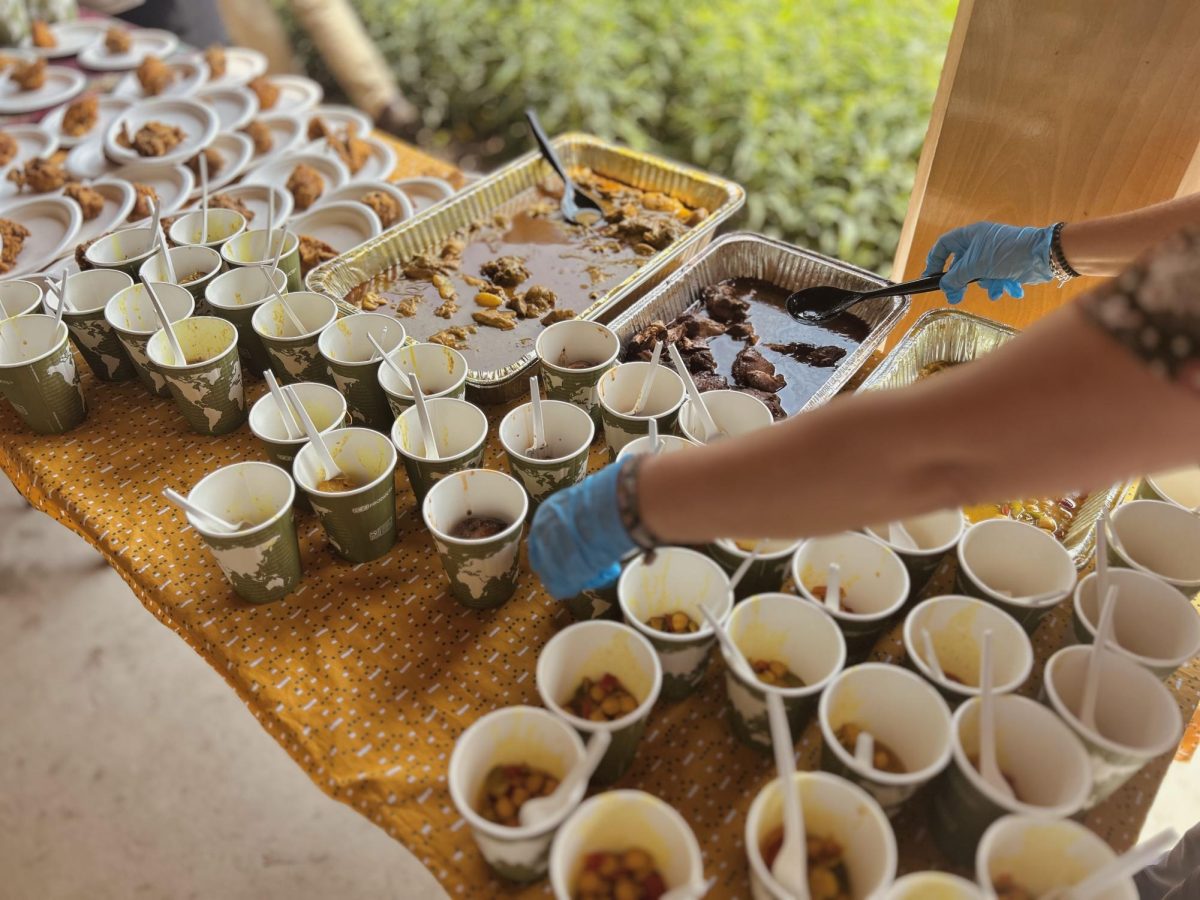
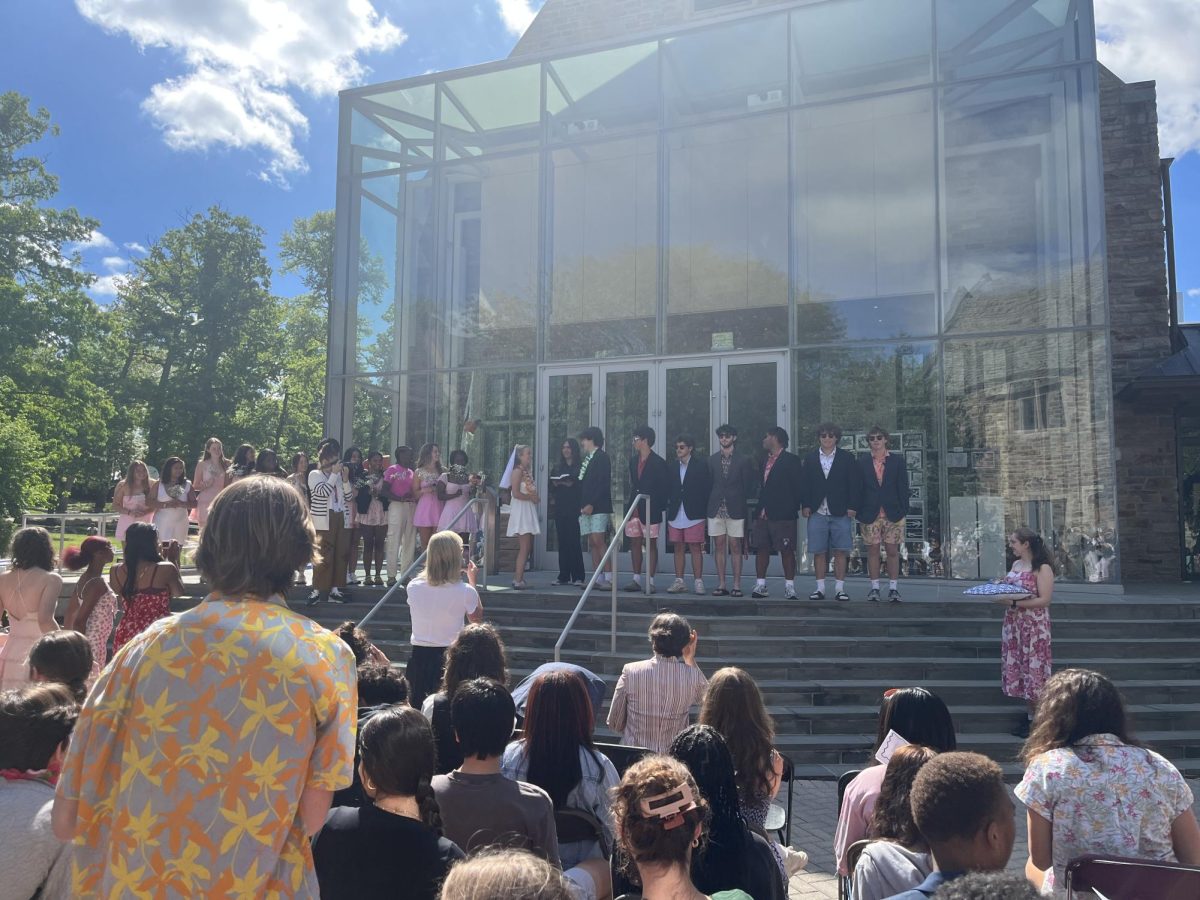
![A Phone Ban at Friends? [Podcast]](https://thequakerquill.org/wp-content/uploads/2025/05/magenta-VrRT19_ZjUY-unsplash-1200x900.jpg)
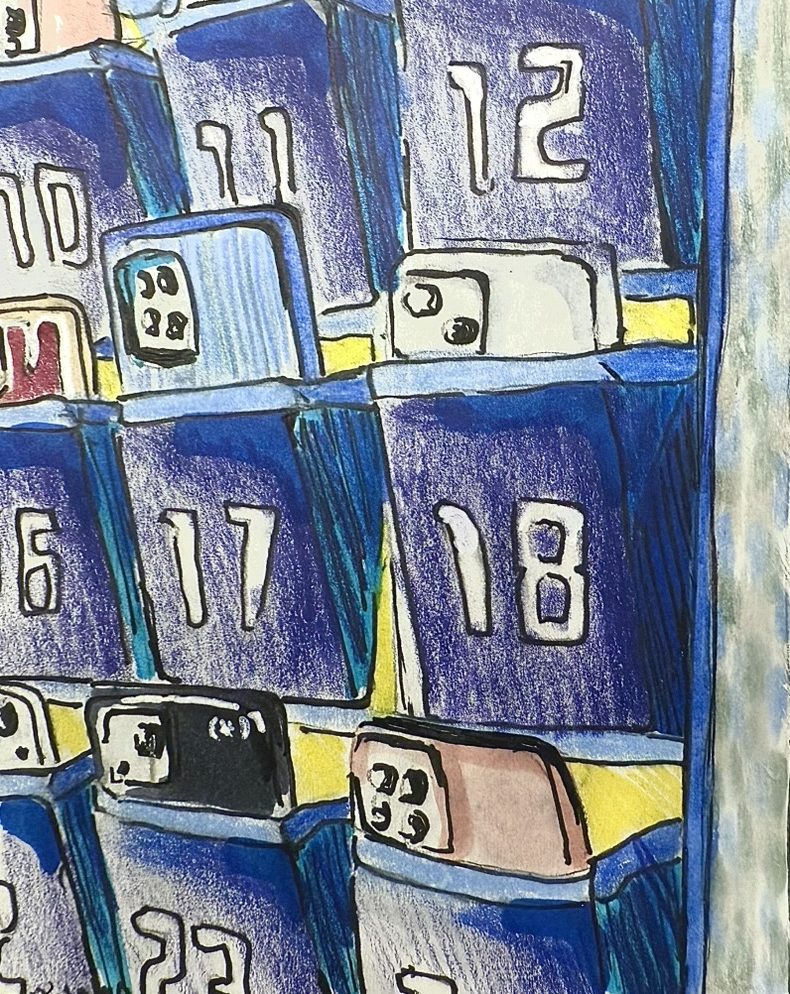

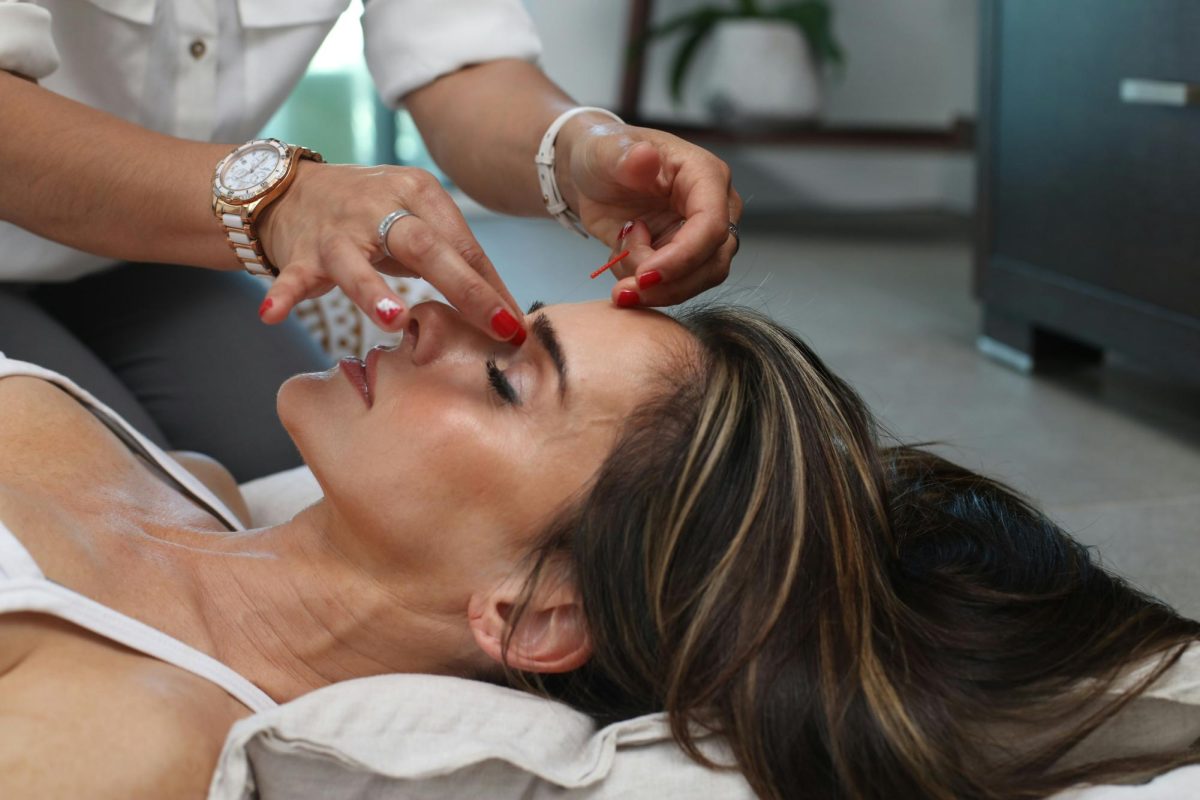
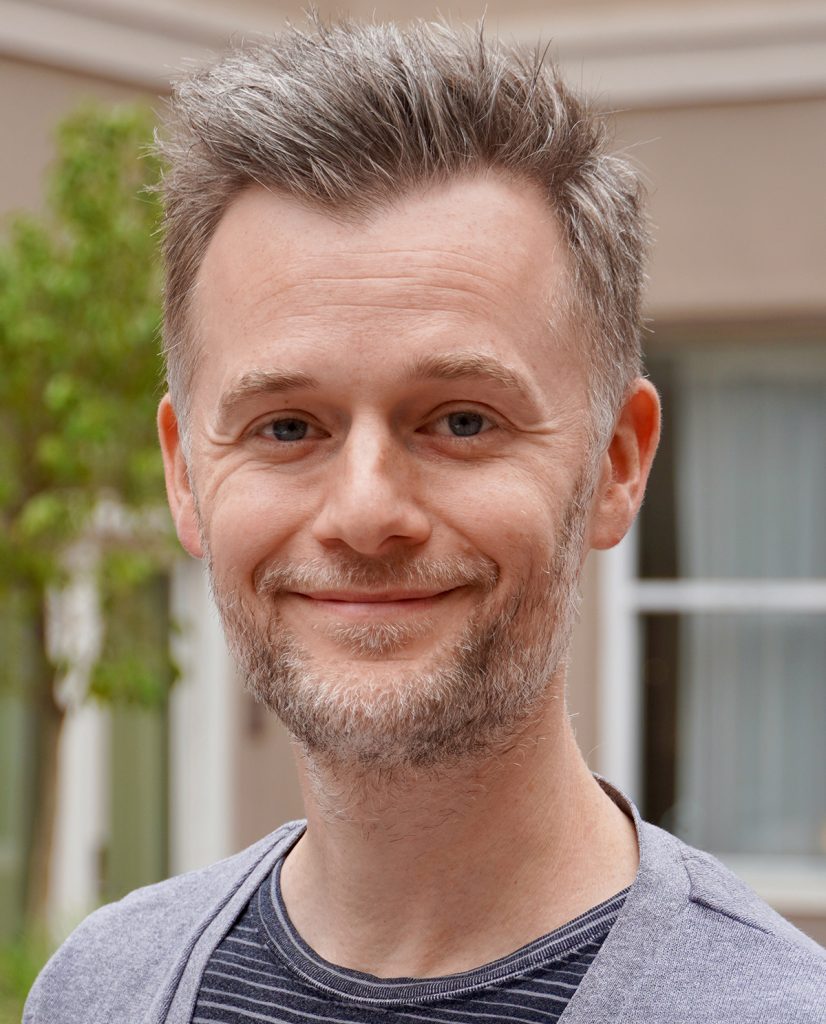

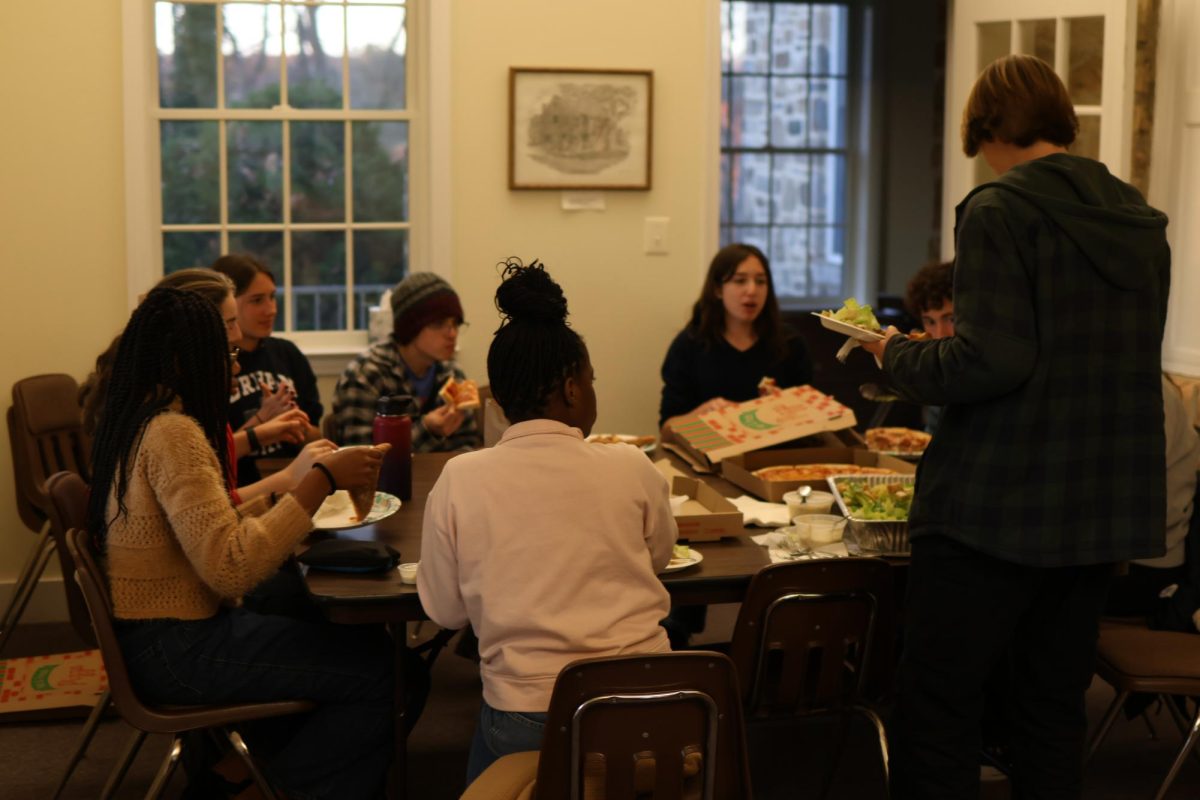

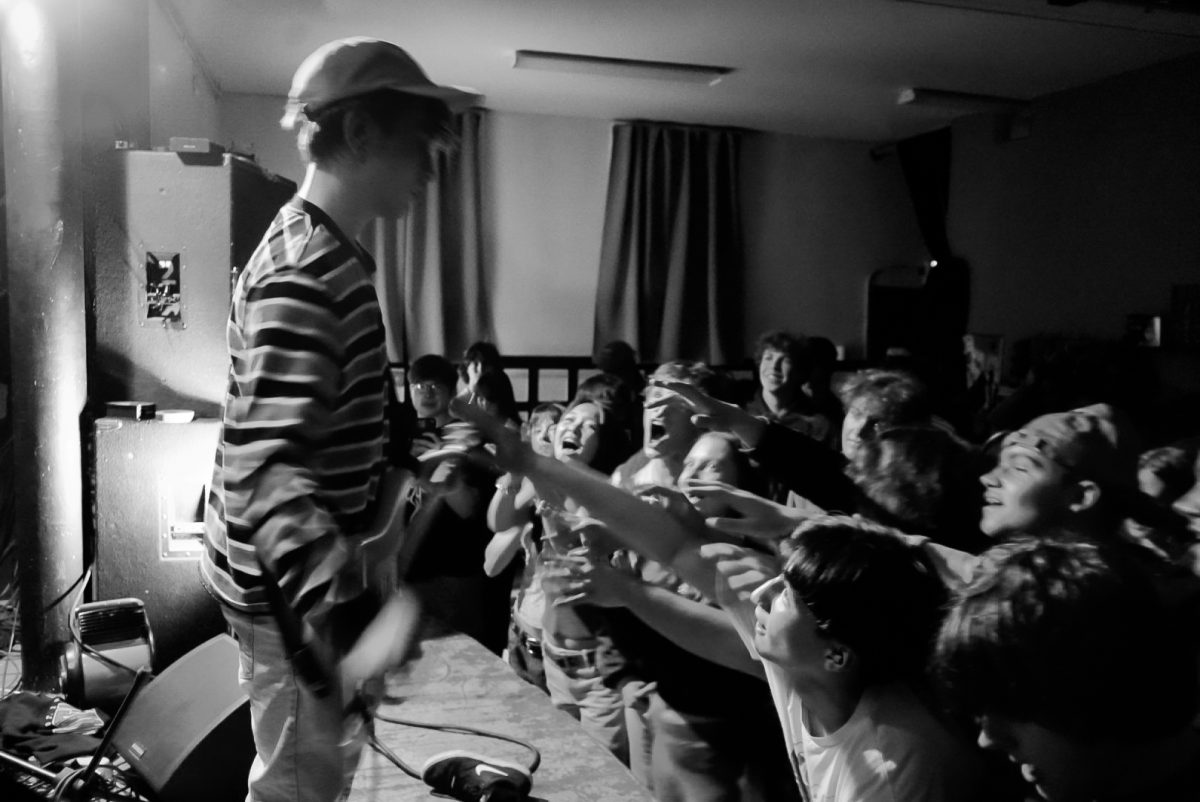
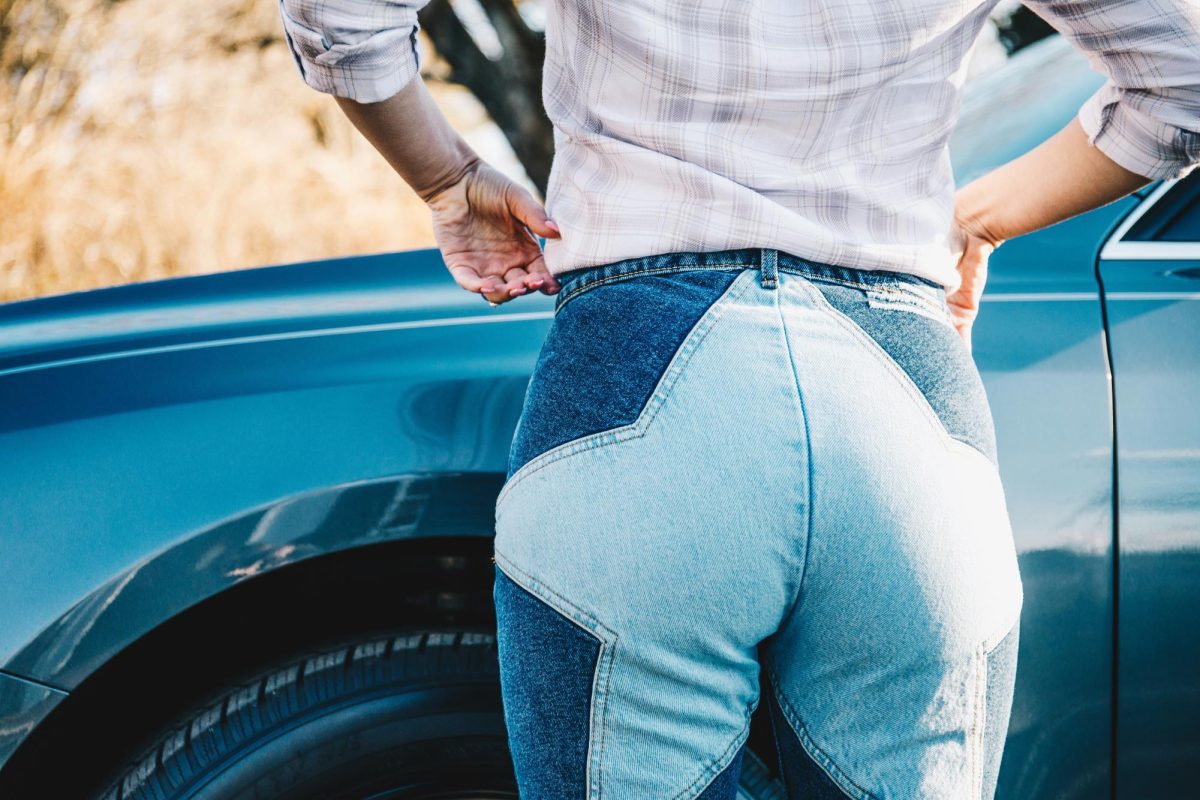
![How Freestyle Club Began [Podcast]](https://thequakerquill.org/wp-content/uploads/2025/05/charly-alvarez-Jv9untmB7G4-unsplash-1200x800.jpg)
